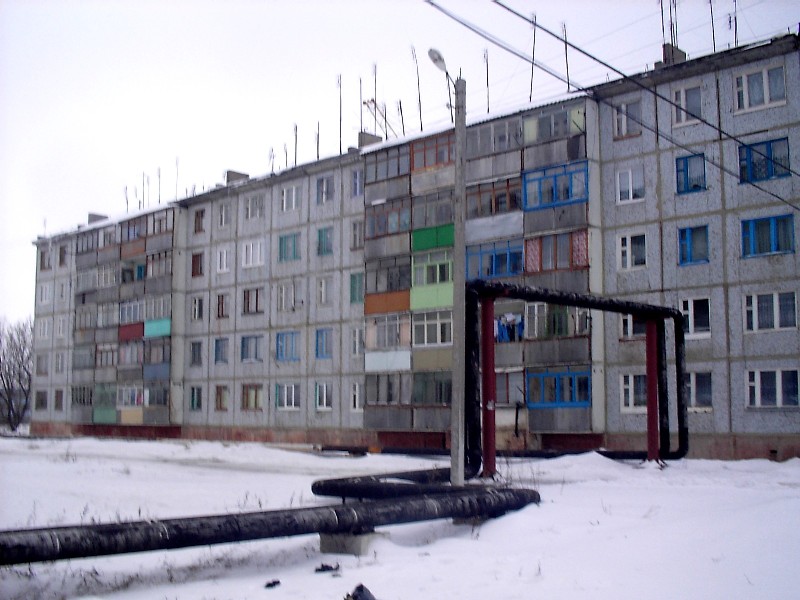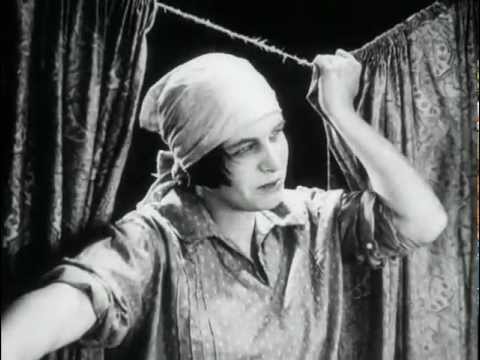Reflecting on a Recurrent Theme in the Art and Literature of the Soviet Union: The Nature and Importance of the “Housing Problem” for Urban Dwellers in the U.S.S.R.

Reflecting on the subjects I have studied and written about for this blog over the past year, there is one topic that comes up so often, and is discussed with such passion, that I am led to conclude that it was an important part of the social consciousness of many Russians during the Soviet period, particularly that of city dwellers. Mikhail Bulgakov, when describing an office in the home of the Moscow’s writers’ union that presumably dealt with this issue for its members, labeled it “Housing Problem.” I will look at three sources that point to the prevalence and importance of the “housing problem,” and argue that while such problems are a common by-product of the rapid urbanization that accompanies modernization and industrialization, the unique path to modernity adopted by the Communist Party, and its responses to the realities thereof, defined the character of this problem for the population in the big cities of the US.S.R.
In the 1927 Russian film, ‘Bed and Sofa’ (see post: Третья Мещанская: “№ 3 Meshchanskaya Street”, or “The Third Philistine”?), crowded living conditions in Moscow play a central role. The story focuses on a young trio—Kolya, his wife Lyudmila and his army buddy Volodya—sharing one room in a basement furnished with a double bed and a sofa for sleeping accommodations. The shuffling of the characters from the bed to the sofa, and back, marks shifts in their inter-relationships. And there are a lot of scenes that nicely depict the day-to-day existence of city folk: Lyudmila doing the chores; Kolya promising to fix things; Volodya unexpectedly arriving for the first time when Lyudmila is dressing; and Kolya taking a shower by standing in a pan barely big enough to fit his feet, while under a samovar with its spigot open as it perches on top of an armoire. None of the characters complains about these conditions, but their lives are shaped by them.
In addition to Bulgakov’s insistence, in ‘Master and Margarita,’ that one could only see the “Housing Problem” sign on the door to the office in the House of Griboedov by cutting through a line that stretched down the stairs to the very doorman’s station, in chapter nine he details the “worst kind of trouble” visited on Nikanor Ivanovich Bosoy, chairman of a housing association, by tenants desperate to take possession of an apartment vacated at the demise of its resident. The news of this death “spread through the entire house with a supernatural speed,” and in the course of two hours Nikanor Ivanovich had received thirty-two claims to the living space of the deceased; “These included appeals, threats, slander, denunciations, promises to make repairs at their own expense, indications of intolerable overcrowding and the impossibility of living in an apartment with bandits. Among others was a description, terrific for its artistic power, of the abduction of dumplings, laid directly into the pocket of a jacket, in apartment № 31. There were also two promises to commit suicide and one admission of a secret pregnancy.”
The desperation of these denizens of Soviet communal apartments can be well understood reading Anya Von Bremzen’s engaging new memoir, ‘Mastering the Art of Soviet Cooking.”(see post: Review- Mastering the Art of Soviet Cooking). Her story covers the history of the U.S.S.R. and pre- and post-Soviet Russia in the 20th century, outlining the life of the author, her mother and grandmother, through prism of food. Included are numerous anecdotes that illuminate a social fabric woven on the loom of crowded communal living in Moscow. The “abduction of donuts” in Bulgakov is recalled in one of her reminiscences: “scribbled skull-and-bones warnings affixed to pots in my grandmother’s communal apartment kitchen, where comrade residents pilfered one another’s soup meat.” Her assertion that in Russian there is no word for “privacy” is used to explain certain features of the toilet: “I won’t share details about the communal bathroom other than the fact that three toilet cabins were separated by plywood, through which the peeper Vitalik liked to drill holes.” Especially fun is her account of a joint action on the part of residents of one floor of a communal house, upon learning of the death of one tenant. They proceed, in the dead of night and with an effort worthy of any Stakanovite, to expand the ridiculously minuscule kitchen by tearing down the walls to the deceased tenant’s room and incorporating that space into the kitchen. When no one who lived on the floor would even admit that there ever was a room there, the building manager could do nothing.
But why these housing problems? Why the overcrowding? Historically, as a society goes from an agricultural to an industrial economy, there is a migration from the countryside to the cities. For most Western states, even though this process was gradual, it caused a whole new set of problems for masses of people unused to living in cities, now living in cities for the first time. For the Soviet Union this process was accelerated, and driven from above. The demand for industrial workers in the cities exploded with the forced industrialization of the Five-Year Plans, while simultaneously the pressures of forced collectivization of agriculture, and its attendant chaos, violence and famine, gave those living in the vastness that was rural Russia all to more reason to move to the city. Another difference that informed the character of Soviet urbanization was that in the West these trends accompanied the emergence of capitalist systems; industrial production grew to satisfy the appetite of a growing consumer class, whose expansion was, in large part, driven by industrial production. In the Soviet Union, with its state managed economy, dictated by the Communist Party rather than “the market,” there was no incentive for providing adequate housing or the amenities of life (see post-All According to “The Plan’). In The U.S.S.R. it was all about “building Communism”, not profit. The pay-off for hard work and putting up with cramped accommodations would come to future generations who would live in a Marxist-Leninist utopia on earth. For this to be realized, sacrifices had to be made, one had to live with alcoholics, “peepers” and bandits.
© 2013, John Dougherty. All rights reserved

Submitted on 2014/06/03 at 4:07 am
The effort to eliminate private kitchens was facilitated by the rapid urbanization that took place in the Soviet Union following the end of World War I, due in no small part to Soviet policy, according to the blog Russian Tumble:
Thanks to southcarolina1670 for this reference to my article in its post regarding Soviet efforts to eliminate private kitchens. I would like to point out, though, that the statement subsequently quoted in southcarolina 1670′s post is my paraphrase of an argument in Anya von Bremzen’s book, Mastering the Art of Soviet Cooking,” which I posted a review of in August 2013. This book does, among other things, point to the failure of any Soviet policies aimed at preventing kitchens from becoming arenas for private political discussion.
It would be nice if southcarolina1670 had provided a link to this site in the mention of it, but even more I wish there were a link to the NPR story referenced.
hey u retards. you capitalists have it all wrong. we are strong working comrades and get paid a fair share. Communism is the best ideology ask life of Boris. We will not back down. those apartments are our childhood. looks in perfect condition and works fine.
Thank you, Gopnik Junior, for your comment. I usually reject comments that don’t encourage civil discourse, but I wanted to respond in this case. I am sensitive to the fact that the perspective of Westerners vis-a-vis Russia can be far from objective due to the nature of past, and present, relations. But if you read the post you are commenting on, you will see that I am in no way passing judgement on the state of urban housing at any time during the Soviet, or any other period, I am am simply highlighting instances in Russian art and literature where Russians are commenting on the conditions of living in communal apartments in the Soviet Union. It is Mikhail Bulgakov, one of the greatest Russian writers and dramatists of the 20th century, not some capitalist “retard” who calls it “the housing problem.” You will also notice that I point out the fact such conditions are a common problem of any society in the process of transitioning from a pre-industrial, monarchical way of operating to a modern industrial one. I would argue that because such a transition was accelerated for Russia in the 1920s, and especially the 1930s, the problems that go along with modernization were exacerbated.